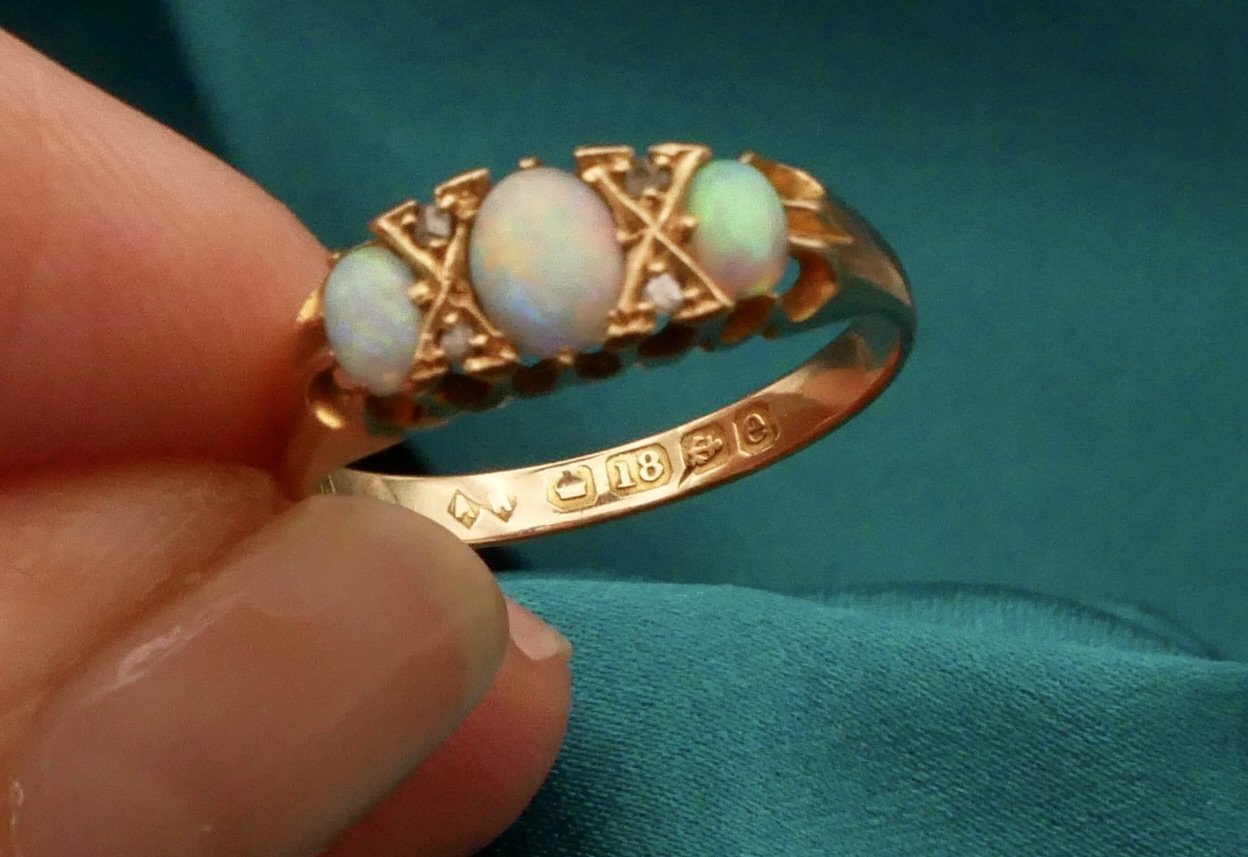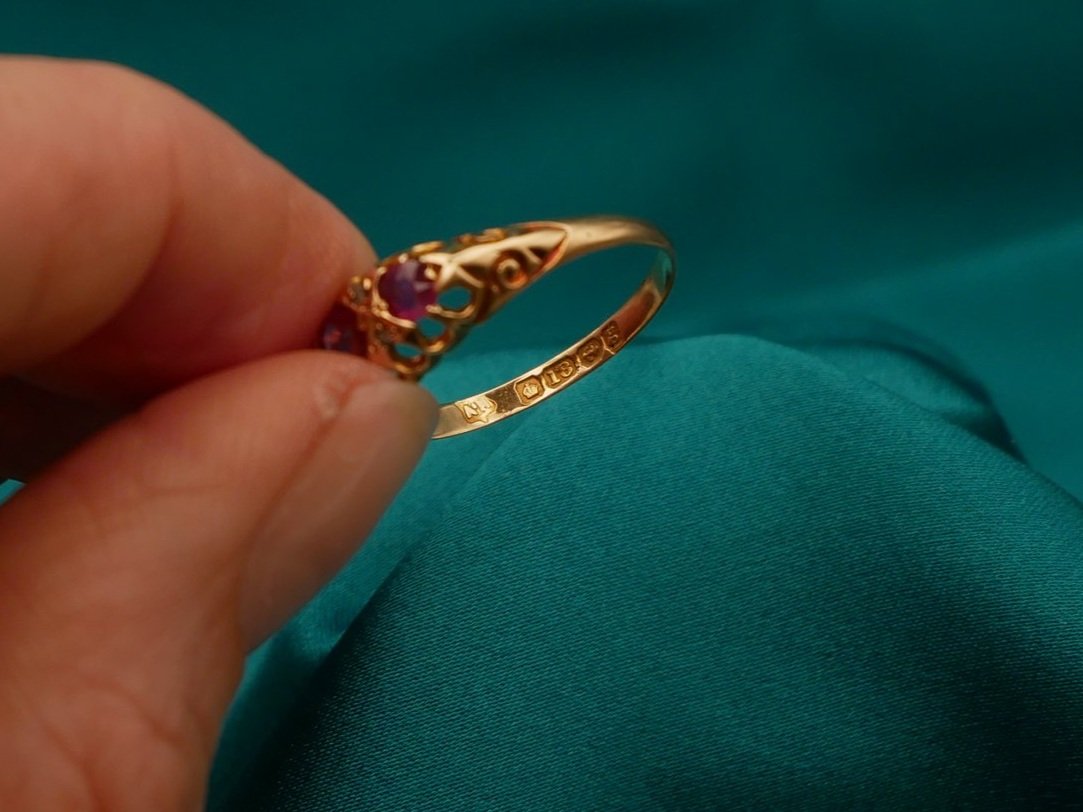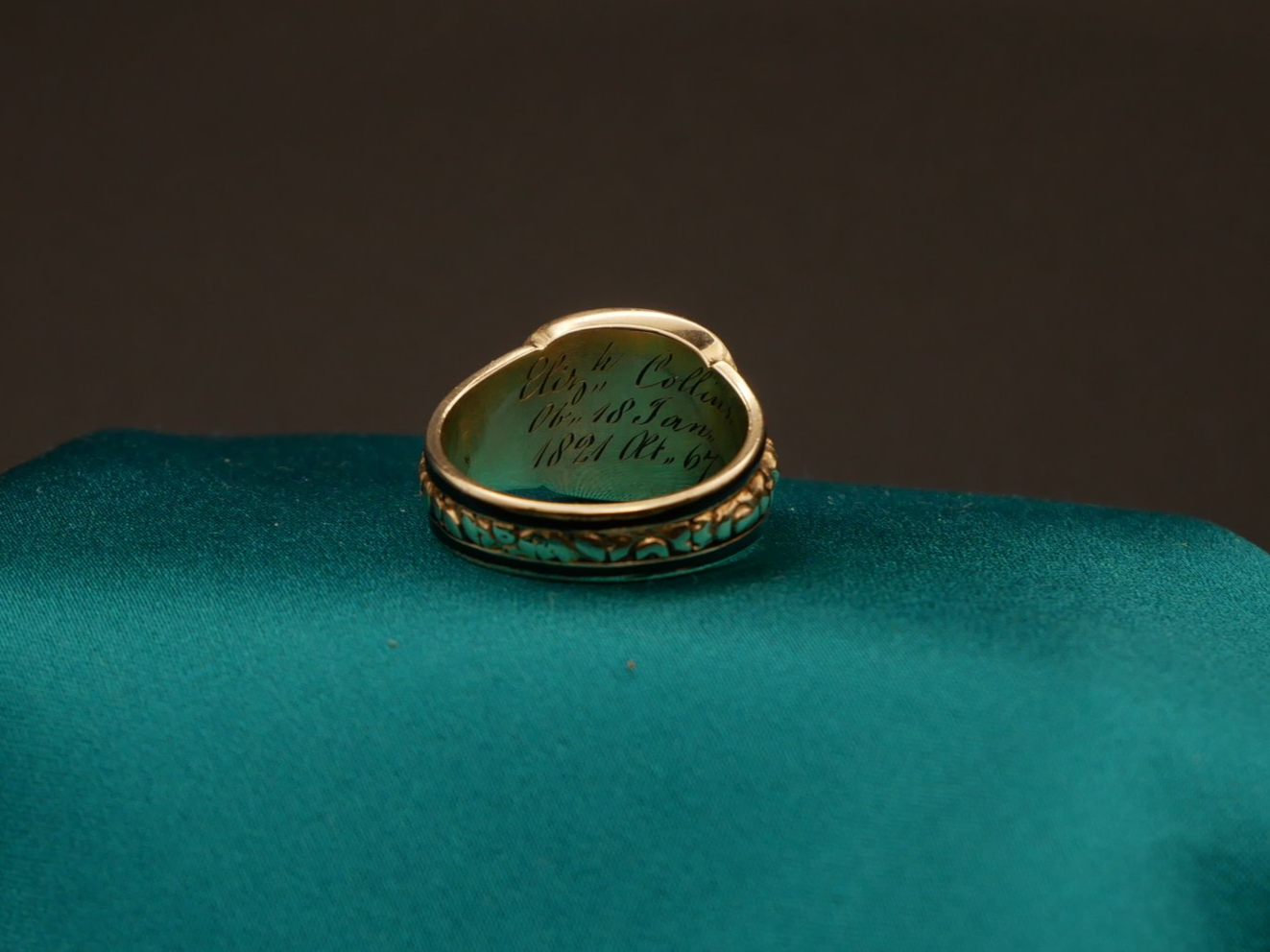Decoding hallmarks on Antique Jewellery
You might have seen jewellery sellers peering closely at a piece through a loupe, then confidently declaring its age and origin. A few years ago, I asked a seller at Gray’s Antique Market in London how he could tell the exact date and place of manufacture. He smiled, took me aside, and pulled out a massive book on hallmarking—along with a surprisingly helpful website.
If you’ve ever held a piece of antique jewellery in your hand and wondered about its past—who wore it, where it was made, and when—it’s likely that the answers were quietly waiting on the back of a clasp, inside a ring band, or along the edge of a brooch. These tiny marks, called hallmarks, are the jeweller’s secret code: a fascinating system that tells us not only the precious metal’s purity but also its origin and age.
A Brief History of Hallmarking in Britain
Britain has one of the oldest and most meticulous hallmarking systems in the world, dating back to the 14th century. But when it comes to Victorian (1837–1901) and Edwardian (1901–1910, often stretching to 1914) jewellery, we enter an especially rich era of craftsmanship and design.
In the Victorian period, jewellery reflected a society in constant change: from early romantic motifs to the symbolism of mourning pieces. Hallmarking during this era followed strict regulations laid down by the Assay Offices—official bodies that tested and marked metal for purity. Each hallmark recorded four key pieces of information: the metal type and fineness, the Assay Office location, the date letter (a changing alphabetical symbol that marks the year), and often the maker’s mark.
When Edward VII ascended the throne in 1901, jewellery entered a new, refined phase—lighter, more delicate, with filigree work and platinum entering popular use. Hallmarking continued uninterrupted, adapting slowly to new materials and tastes.
How to Identify Hallmarks on Your Own Jewellery
If you're lucky enough to own a piece of antique jewellery, examining its hallmarks can be an exciting form of detective work.



Over the years, I’ve learned to spot hallmarks almost instinctively. They’re usually found on the inside of rings, the back of brooches, near the clasp of a chain or bracelet, or even tucked away on the hinge of a locket. Use a magnifying glass or a jeweller’s loupe to help.
Most British antique jewellery will have up to four marks:
A purity mark (for example, a lion passant for sterling silver, or a crown for gold).
A town mark showing the Assay Office (a leopard’s head for London, an anchor for Birmingham, a castle for Edinburgh, and so on).
A date letter—this tells you the exact year the item was hallmarked. Each letter has a specific font and shield shape (called a cartouche), which changes every 20–25 years. Note that upper- and lower-case letters were used. The date letter system resets with each new cycle, so identifying the correct year means comparing the shape and style as well as the letter itself.
A maker’s mark—usually two or three initials for the goldsmith or company, often inside a small shield.
Decoding the Marks
There are excellent hallmark reference charts online and in print that can help you decode the symbols—it’s oddly satisfying, like solving a tiny puzzle. My recommendation is the hallmark book Jackson’s Hallmarks: English, Scottish, Irish Silver and Gold Marks from 1300 to the Present Day, edited by Ian Pickford (2023), and the Hallmark Wizard on www.gold-traders.co.uk/hallmarks.
Mourning jewellery is often the easiest to identify, as many pieces are engraved with the name and date of death of a loved one. Sometimes, it’s even possible to trace where that person lived or was buried (see my other blog posts). Being able to pinpoint the exact time and place a mourning piece was made or worn is always a little breathtaking.
Not all antique pieces are hallmarked. Some were made privately or abroad, and others lost their marks over time due to wear or repair. That doesn’t mean the piece is fake—just that it’s a little more mysterious.

